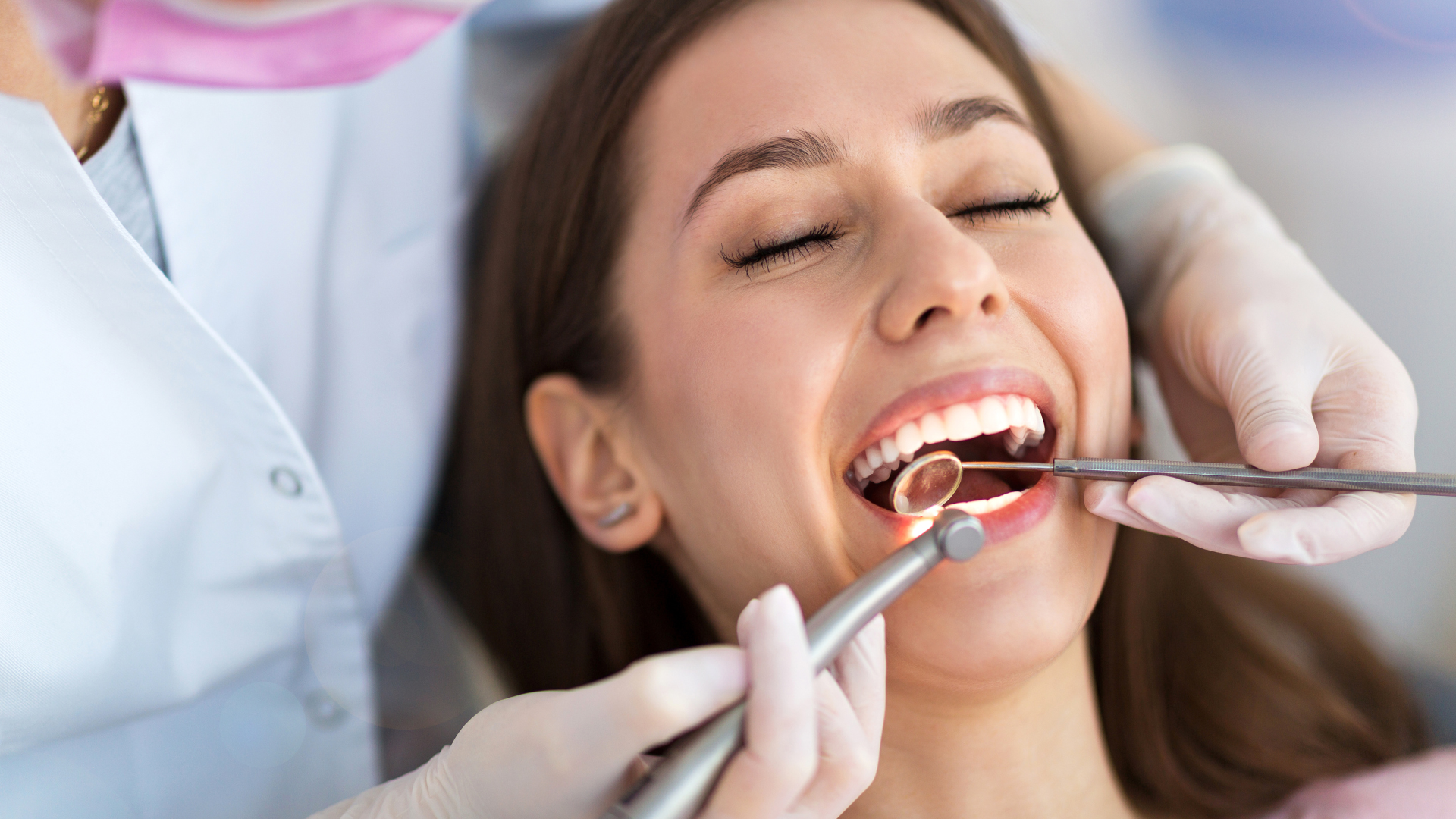How Long Do Dentist Appointments Take?
Understanding the Duration of Different Dental Procedures
Routine Check-ups and Cleanings
Routine dental check-ups and cleanings are essential for maintaining oral health and are typically the shortest appointments you'll encounter. Most routine visits last between 30 to 60 minutes, depending on the patient's oral hygiene and the time since their last visit. During this time, a dental hygienist will clean your teeth, removing plaque and tartar, followed by a polish and floss. Afterwards, the dentist will perform an examination to check for any signs of decay or other issues.
- Arrival and check-in
- Teeth cleaning by the hygienist
- Dental examination by the dentist
- Discussion of findings and oral health tips
It's important to remember that these appointments are not just about cleaning, but also about early detection of potential problems. Regular visits can help prevent the need for more complex and time-consuming procedures in the future.
Fillings, Crowns, and Extractions
When it comes to restorative procedures like fillings, crowns, and extractions, the time required can vary significantly. Fillings are typically the quickest of these, often completed within 30 minutes to an hour. Crowns may require at least two visits: one for preparing the tooth and fitting a temporary crown, and another for placing the permanent crown, with each visit lasting about 90 minutes.
Extractions can be more unpredictable. A simple extraction might take as little as 20 to 40 minutes, while surgical extractions, such as those for impacted wisdom teeth, can take an hour or more. Below is a general guideline for these procedures:
| Procedure | Estimated Time |
|---|---|
| Fillings | 30-60 minutes |
| Crowns (per visit) | Up to 90 minutes |
| Simple Extractions | 20-40 minutes |
| Surgical Extractions | 60+ minutes |
It's important to note that these times are estimates and can vary based on individual circumstances. Your dentist will provide a more accurate time frame during your consultation.
Root Canals and Major Surgeries
Root canals and major dental surgeries are among the most time-intensive procedures in dentistry. These treatments can take several hours and may require multiple visits to complete. The complexity of the issue being addressed often dictates the duration of the appointment.
- Root canal therapy typically involves one to three visits, with each session lasting from 30 minutes to two hours.
- Surgical extractions, such as wisdom tooth removal, can take about 30 minutes to an hour per tooth.
- More complex surgeries, like dental implants or reconstructive procedures, may extend beyond a couple of hours.
The goal of these procedures is not only to address immediate dental concerns but also to ensure long-term oral health. Adequate time is necessary to achieve precision and to promote proper healing.
Patients should be prepared for the possibility of post-operative care and follow-up appointments, which are crucial for monitoring recovery and ensuring the success of the treatment.
Orthodontic Appointments and Adjustments
Orthodontic appointments, such as those for Invisalign Downey treatments, can vary significantly in duration. Initial consultations and fittings for orthodontic devices like Invisalign may take longer, often up to an hour, as precise measurements and treatment planning are essential. Subsequent adjustments are typically shorter, ranging from 15 to 30 minutes, depending on the complexity of the adjustment needed.
Regular adjustments are crucial to the success of orthodontic treatments. They ensure that the devices are working correctly and that the teeth are moving as planned.
Follow-up visits are scheduled periodically to monitor progress and make any necessary changes. Here's a general timeline for orthodontic adjustments:
- First adjustment: 4-6 weeks after initial fitting
- Regular adjustments: Every 4-8 weeks
- Final adjustments: As needed, based on individual treatment progress
It's important to note that the total treatment time for orthodontic procedures like Invisalign can span several months to a few years. Patients should maintain open communication with their orthodontist to stay informed about their treatment timeline.
Factors Influencing the Length of Your Dentist Visit
Complexity of the Dental Issue
The complexity of the dental issue at hand is a significant factor in determining the duration of a dentist appointment. Simple procedures such as routine cleanings may take as little as 30 minutes, while more complex treatments like root canals can extend beyond two hours. The intricacies involved in certain dental conditions require meticulous care and precision, which naturally extends the time needed.
- Routine Cleaning: ~30-60 minutes
- Filling: ~15-30 minutes
- Crown: ~60-90 minutes (across multiple visits)
- Extraction: ~45-60 minutes
- Root Canal: ~90-180 minutes
It's important to remember that these times are estimates and can vary based on individual circumstances. The dentist's approach, the extent of decay or damage, and the specific teeth affected all contribute to the length of the procedure. Patients should consult with their dentist for a more accurate time estimate based on their unique situation.
Type of Dental Practice
The type of dental practice you visit can significantly influence the duration of your appointment. Private practices may offer more personalized care, potentially leading to longer appointment times, while chain clinics might prioritize efficiency and have shorter visits.
- Private Practices
- Personalized care
- Longer appointments
- Dental Chains
- Efficiency-focused
- Shorter appointments
It's important to consider that specialized dental practices, such as those focusing on cosmetic dentistry or orthodontics, may require longer appointments due to the nature of the services provided.
Ultimately, the choice of practice should align with your needs and expectations for the dental care you are seeking. Whether it's a thorough examination or a quick routine check-up, understanding the operational style of the dental practice can help you better plan your visit.
Preparation and Aftercare Considerations
The time you spend at the dentist's office isn't limited to the procedure itself. Preparation and aftercare are crucial components that can significantly affect the duration of your visit. Proper preparation can streamline the process, while aftercare ensures that the treatment's benefits are long-lasting.
Before your appointment, you may need to complete paperwork, take pre-procedure x-rays, or undergo a preliminary cleaning. These steps are essential for a successful treatment but do add to the overall time spent in the dental office.
After your procedure, your dentist will provide instructions for care at home, which might include medication schedules, dietary restrictions, or follow-up appointments. Adhering to these aftercare instructions is vital for your recovery and can prevent the need for additional visits.
Understanding the preparation and aftercare steps for common dental procedures can help you plan your schedule accordingly:
- Routine Check-ups and Cleanings: Arrive early to update medical history; post-visit, follow any personalized oral hygiene advice.
- Fillings and Extractions: Avoid eating before the procedure; afterwards, manage pain and swelling as instructed.
- Root Canals: Pre-procedure antibiotics may be required; post-treatment, avoid chewing on the affected side until fully healed.
- Orthodontic Adjustments: Clean teeth thoroughly before; after adjustments, use wax as needed for comfort.
Patient Cooperation and Anxiety Levels
Patient cooperation and anxiety levels can significantly affect the duration of a dental appointment. Anxiety can lead to prolonged procedures due to the need for additional reassurance and breaks, while uncooperative behavior may hinder the dentist's efficiency.
- Pre-appointment communication can help manage expectations and reduce anxiety.
- Distraction techniques such as listening to music or focusing on breathing can ease nervousness.
- Sedation options may be available for those with high anxiety levels, but this can extend the visit duration.
It's important for patients to discuss their concerns with their dentist prior to the visit to ensure a smoother experience. Open dialogue can lead to tailored strategies that minimize stress and expedite the appointment.
Maximizing Efficiency During Your Appointment
Scheduling and Timeliness
Maximizing the efficiency of your dental appointment begins with proper scheduling and punctuality. Arriving on time or even a few minutes early can significantly reduce delays for both you and the dental office. It's important to consider the office's schedule when booking your appointment; some procedures may be best scheduled at certain times of the day.
- Confirm your appointment a day in advance.
- Arrive 10-15 minutes early to complete any necessary paperwork.
- Avoid peak hours if possible to minimize waiting time.
Being timely does not only help in reducing your wait time but also allows the dentist to spend the appropriate amount of time needed for your dental care without feeling rushed.
Effective Communication with Your Dentist
Effective communication with your dentist is crucial for a successful and efficient dental appointment. Clearly expressing your concerns and symptoms can help your dentist make a more accurate diagnosis and choose the appropriate treatment, potentially reducing the time spent in the dental chair. When searching for the best dentist in Downey or a cosmetic dentist Downey, consider their willingness to listen and explain procedures.
- Discuss any dental anxieties you may have.
- Provide a complete health history.
- Ask questions about the procedures and treatments.
- Clarify any doubts regarding aftercare instructions.
Remember, a two-way dialogue can lead to better outcomes and a more personalized dental care experience. By being proactive and prepared to discuss your dental health, you can help streamline your visit and ensure that you receive the most effective care possible.
Following Pre-visit Instructions
Adhering to pre-visit instructions provided by your dentist can significantly streamline your appointment. Preparation is key to ensuring that the time spent in the dental chair is used efficiently. For instance, if you're scheduled for a procedure that requires fasting, failing to do so may lead to rescheduling and lost time.
- Arrive with completed forms to avoid spending extra time filling them out in the office.
- Brush and floss thoroughly before your appointment to allow for a quicker start.
- If you have dental anxiety, practice relaxation techniques beforehand to help the visit go smoothly.
By following these simple steps, you can minimize delays and make your dentist's job easier, leading to a quicker and more effective visit.
Understanding Post-treatment Care
Proper post-treatment care is crucial for ensuring a quick recovery and minimizing the time spent on follow-up visits. Adhering to your dentist's instructions can significantly impact the healing process. After certain procedures, you may be provided with a set of guidelines to follow, which could include medication schedules, dietary restrictions, or oral hygiene practices.
- Take prescribed medications as directed
- Avoid certain foods and beverages
- Perform oral hygiene with care
- Monitor for any signs of complications
It's important to recognize that your actions after leaving the dentist's office play a pivotal role in your oral health. Neglecting post-treatment care can lead to complications, requiring additional appointments and potentially extending treatment times.
The Impact of Technology on Dental Appointment Times
Advancements in Diagnostic Tools
The dental industry has seen significant advancements in diagnostic tools, which have streamlined the process of identifying dental issues. Digital X-rays and 3D imaging allow for quicker and more accurate diagnoses, reducing the time patients spend in the dentist's chair. These technologies not only speed up the appointment but also enhance the precision of the treatment plan.
- Digital X-rays: Faster processing and clearer images
- Intraoral cameras: Real-time visuals of the mouth's interior
- 3D imaging: Detailed views for complex procedures
The integration of advanced diagnostic tools has revolutionized the way dentists assess and plan treatments, ultimately leading to more efficient and effective dental care.
With these tools, dentists can often detect problems before they become severe, which can lead to less invasive and shorter treatments. The use of such technology is a testament to the dental profession's commitment to improving patient experience and outcomes.
Innovations in Treatment Techniques
Dental care has seen significant advancements in treatment techniques that have revolutionized patient care and reduced the time spent in the dentist's chair. Laser dentistry, for example, allows for more precise and less invasive procedures, often eliminating the need for anesthesia and reducing recovery time. Similarly, CAD/CAM technology enables the creation of custom dental restorations like crowns and veneers in a single visit, which traditionally required multiple appointments.
- Laser Dentistry: Faster, less painful procedures with quicker healing.
- CAD/CAM Technology: Same-day restorations, reducing multiple visits.
- 3D Printing: Customized dental appliances ready in hours, not days.
The integration of these innovative techniques not only enhances the patient experience by minimizing discomfort and wait times but also improves the accuracy and efficiency of dental treatments. Dentists can now offer more complex treatments in a shorter amount of time, which is a win-win for both the practice and the patient.
Digital Record-Keeping and Scheduling Systems
The integration of digital record-keeping and scheduling systems has revolutionized the way dental practices manage appointments. These systems enhance efficiency by streamlining administrative tasks, reducing the time spent on manual entry and minimizing the risk of errors. Patients benefit from quicker check-ins and less waiting time, as their records are easily accessible and up-to-date.
- Automated reminders for upcoming appointments
- Real-time updates on schedule changes
- Quick access to patient history and treatment plans
By adopting digital solutions, dental offices can allocate more time to patient care rather than paperwork, ultimately shortening the duration of visits and improving the overall patient experience.
Teledentistry and Virtual Consultations
Teledentistry and virtual consultations have revolutionized the way we approach dental care, significantly impacting appointment times. These remote services can drastically reduce the need for in-person visits, making it easier for patients to receive timely advice and care.
- Initial consultations can often be conducted online, saving travel time.
- Follow-up appointments for non-invasive treatments can be managed virtually.
- Virtual consultations allow for quick assessments in emergency situations.
By leveraging teledentistry, dental practices can offer more flexible scheduling options and reduce the time patients spend in the waiting room. This not only improves the efficiency of the dental practice but also enhances patient satisfaction by providing care at their convenience.
-
How long does a routine dental check-up and cleaning take?
A routine dental check-up and cleaning typically takes about 30 to 60 minutes, depending on the condition of your teeth and gums.
-
What is the average time required for a dental filling, crown, or extraction procedure?
The time required for a dental filling is usually about 20 to 60 minutes, while crowns and extractions can take up to an hour or more, depending on complexity.
-
How much time should I expect to spend at the dentist for a root canal or major surgery?
Root canal treatments can take between 90 minutes to 3 hours spread over multiple visits, and major surgeries vary widely, often requiring several hours or multiple appointments.
-
Are orthodontic appointments longer than regular dental visits?
Orthodontic appointments for adjustments typically take about 20 to 40 minutes, but the initial consultation and fitting may take longer.
-
What factors can cause my dentist appointment to take longer than expected?
Factors such as the complexity of the dental issue, the type of dental practice, patient cooperation, and anxiety levels can all affect the duration of your dentist appointment.
-
Can modern dental technology reduce the time I spend in the dentist's chair?
Yes, advancements in dental technology, such as improved diagnostic tools and treatment techniques, can make appointments more efficient and reduce the time required for procedures.
Hours & address
Mon-Thu — 8am - 6pm
Fri — 8am - 4pm
Sat — 8am - 2pm
10805 Paramount Blvd.
Downey, California
90241
Navigation Links
© 2023 Gallatin Dental Group | All Rights Reserved




